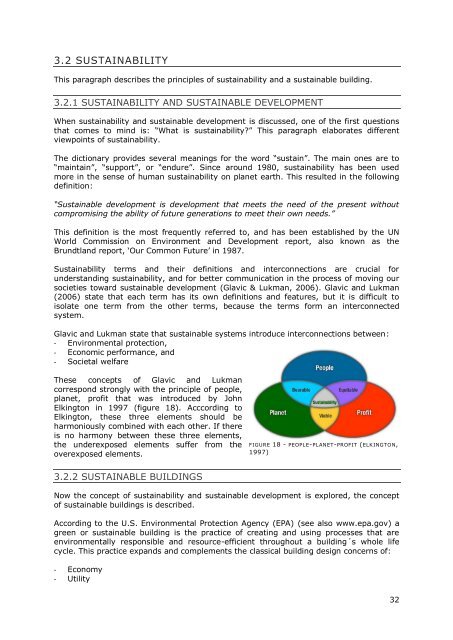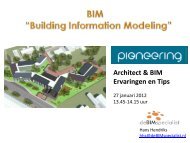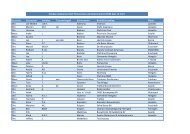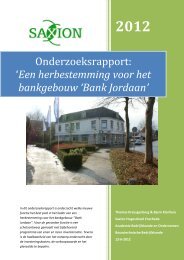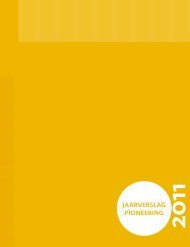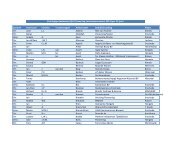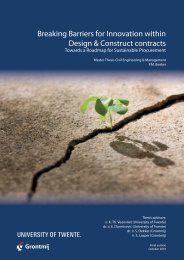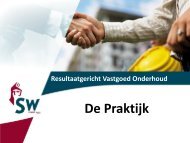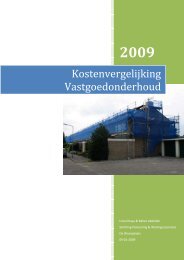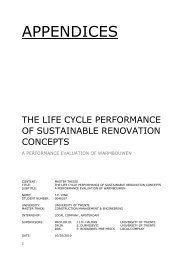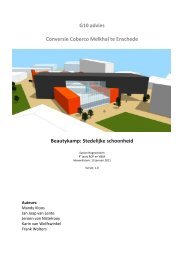the life cycle performance of sustainable renovation concepts
the life cycle performance of sustainable renovation concepts
the life cycle performance of sustainable renovation concepts
- No tags were found...
Create successful ePaper yourself
Turn your PDF publications into a flip-book with our unique Google optimized e-Paper software.
3.2 SUSTAINABILITYThis paragraph describes <strong>the</strong> principles <strong>of</strong> sustainability and a <strong>sustainable</strong> building.3.2.1 SUSTAINABILITY AND SUSTAINABLE DEVELOPMENTWhen sustainability and <strong>sustainable</strong> development is discussed, one <strong>of</strong> <strong>the</strong> first questionsthat comes to mind is: “What is sustainability?” This paragraph elaborates differentviewpoints <strong>of</strong> sustainability.The dictionary provides several meanings for <strong>the</strong> word “sustain”. The main ones are to“maintain”, “support”, or “endure”. Since around 1980, sustainability has been usedmore in <strong>the</strong> sense <strong>of</strong> human sustainability on planet earth. This resulted in <strong>the</strong> followingdefinition:“Sustainable development is development that meets <strong>the</strong> need <strong>of</strong> <strong>the</strong> present withoutcompromising <strong>the</strong> ability <strong>of</strong> future generations to meet <strong>the</strong>ir own needs.”This definition is <strong>the</strong> most frequently referred to, and has been established by <strong>the</strong> UNWorld Commission on Environment and Development report, also known as <strong>the</strong>Brundtland report, „Our Common Future‟ in 1987.Sustainability terms and <strong>the</strong>ir definitions and interconnections are crucial forunderstanding sustainability, and for better communication in <strong>the</strong> process <strong>of</strong> moving oursocieties toward <strong>sustainable</strong> development (Glavic & Lukman, 2006). Glavic and Lukman(2006) state that each term has its own definitions and features, but it is difficult toisolate one term from <strong>the</strong> o<strong>the</strong>r terms, because <strong>the</strong> terms form an interconnectedsystem.Glavic and Lukman state that <strong>sustainable</strong> systems introduce interconnections between:- Environmental protection,- Economic <strong>performance</strong>, and- Societal welfareThese <strong>concepts</strong> <strong>of</strong> Glavic and Lukmancorrespond strongly with <strong>the</strong> principle <strong>of</strong> people,planet, pr<strong>of</strong>it that was introduced by JohnElkington in 1997 (figure 18). Acccording toElkington, <strong>the</strong>se three elements should beharmoniously combined with each o<strong>the</strong>r. If <strong>the</strong>reis no harmony between <strong>the</strong>se three elements,<strong>the</strong> underexposed elements suffer from <strong>the</strong>overexposed elements.FIGURE 18 - PEOPLE-PLANET-PROFIT (ELKINGTON,1997)3.2.2 SUSTAINABLE BUILDINGSNow <strong>the</strong> concept <strong>of</strong> sustainability and <strong>sustainable</strong> development is explored, <strong>the</strong> concept<strong>of</strong> <strong>sustainable</strong> buildings is described.According to <strong>the</strong> U.S. Environmental Protection Agency (EPA) (see also www.epa.gov) agreen or <strong>sustainable</strong> building is <strong>the</strong> practice <strong>of</strong> creating and using processes that areenvironmentally responsible and resource-efficient throughout a building´s whole <strong>life</strong><strong>cycle</strong>. This practice expands and complements <strong>the</strong> classical building design concerns <strong>of</strong>:- Economy- Utility32


